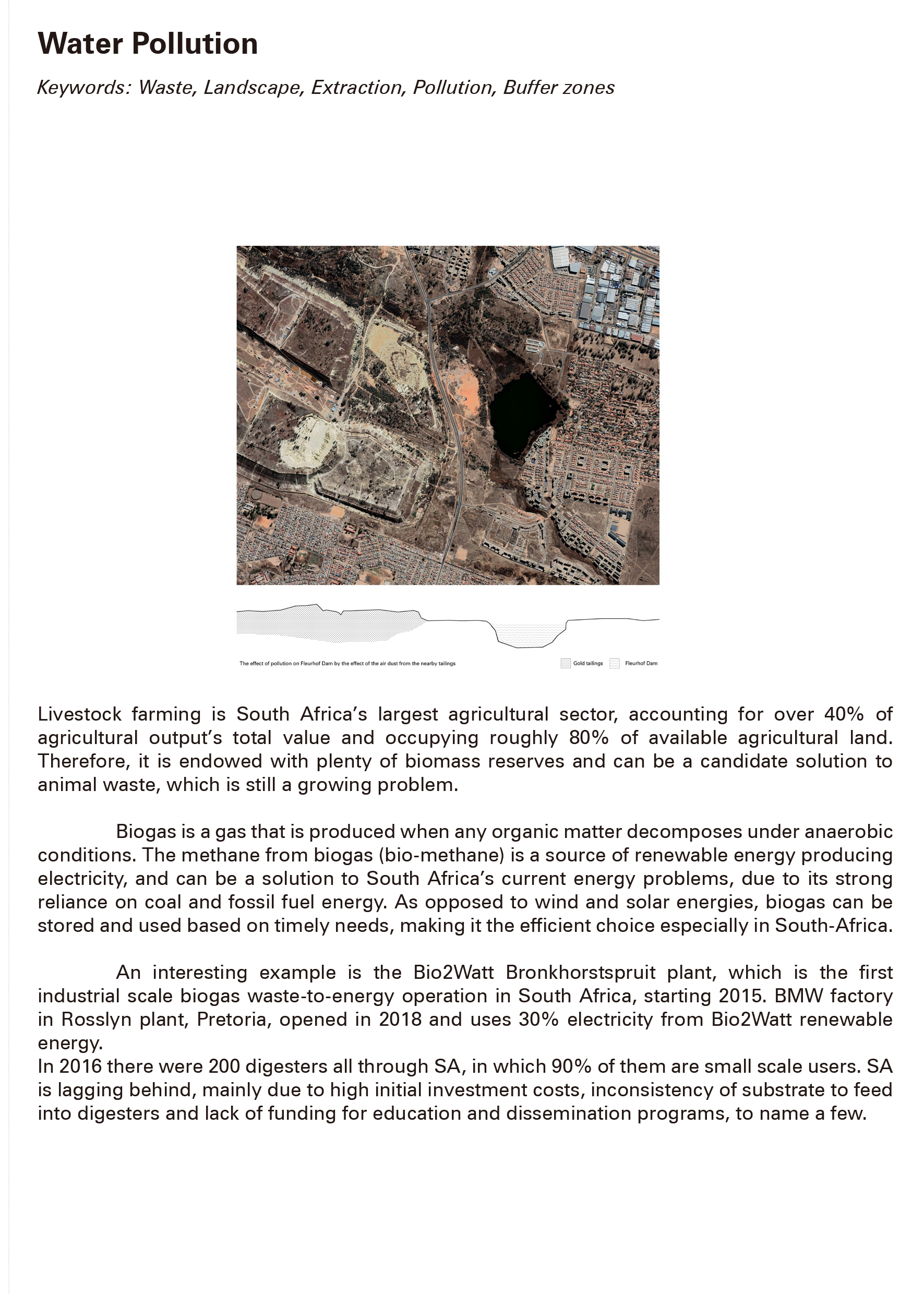Anti-dust Landscape

This project intervenes with the Fleurhof Dam lake and its
surroundings to implement access to the whole area for the nearby
dwellers. This lake is known to be a place where the communities
of Soweto, Roodepoort, and the small town of Fleurhof practice
religious rituals such as river baptism for hundreds of years, so
it has to contain clean water through a facility due to its polluted
conditions and health issues.
The Anti-dust Landscape represents an evocative
projection to offer a healthier environment over a long time span
while contributing to maintaining the local religious practices as a
way to preserve the cultural heritage of the place.

Land Pollution
Tailings within the Buffer Zone
The contribution is located in the buffer zone within the Witwatersrand gold mining belt which divides Soweto and Roodepoort–one of the urban conglomerates of Johannesburg. Fleurhof contains heavy metals and uranium as it is surrounded by post-mining tailings for gold extraction.
The pollution comes from the dust through the surrounding tailings and due to the previous mining extraction processes. So, the significance of providing a water cycle able to clean the water in a long term relates not only to the safety of those people who make use of the lake but also because the water streams go to the Vaal River which functions as an industrial and agricultural water source.


Diagrams
Water cycle, energy and vegetation
The Anti-dust Landscape controls the water which flows into Fleurhof from the upwards lake by a cycle that provides a closed system.
This cycle has an artificial lake that is reshaped from an existing water supply from the former mining site, and the system consists of two dams—one for input and one for output—then releases filtered water from the tailings area.




